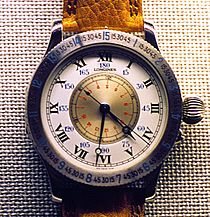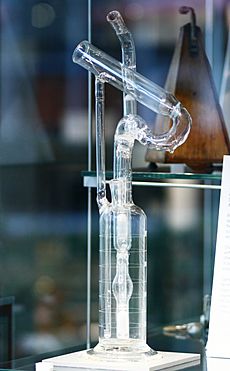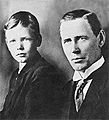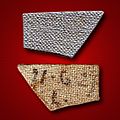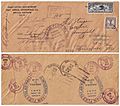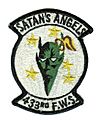Charles Lindbergh facts for kids
Quick facts for kids
Charles Lindbergh
|
|
|---|---|
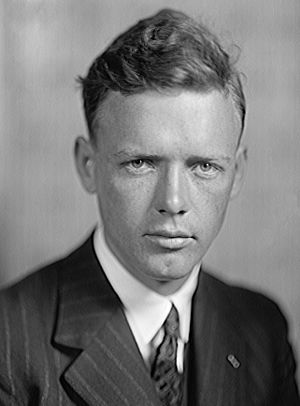
Photo by Harris & Ewing
|
|
| Born |
Charles Augustus Lindbergh
February 4, 1902 |
| Died | August 26, 1974 (aged 72) Kipahulu, Maui, Hawaii, U.S.
|
| Resting place | Palapala Ho'omau Church, Kipahulu, Maui, Hawaii |
| Nationality | |
| Other names |
|
| Education | Sidwell Friends School Redondo Union High School Little Falls High School University of Wisconsin–Madison (did not graduate) |
| Occupation | Aviator, author, inventor, explorer, activist |
| Known for | First solo transatlantic flight (1927) |
| Home town | Little Falls, Minnesota |
| Spouse(s) | Anne Morrow Lindbergh (1929–1974) (his death) |
| Children | With Anne Morrow Lindbergh: Charles Augustus Lindbergh Jr. Jon Lindbergh Land Morrow Lindbergh Anne Spencer Lindbergh (Perrin) Scott Lindbergh Reeve Lindbergh (Brown) |
| Parent(s) | Charles August Lindbergh Evangeline Lodge Land Lindbergh |
| Awards | Medal of Honor (1927) Distinguished Flying Cross (1927) Congressional Gold Medal (1928) |
| Signature | |
 |
|
Charles Augustus Lindbergh (February 4, 1902 – August 26, 1974) was a famous American airplane pilot. People knew him as "Lucky Lindy" and "The Lone Eagle." He became very well known for being the first person to fly an airplane alone and without stopping across the Atlantic Ocean in 1927.
Contents
Early Life and Flying Dreams
Lindbergh was born in Detroit, Michigan, in the United States. His parents were from Sweden. He grew up in Little Falls, Minnesota. His father was a lawyer and a U.S. congressman. His mother was a teacher.
From a young age, Charles was very interested in machines. In 1922, he joined a pilot training program. He even bought his own airplane and became a stunt pilot, doing amazing tricks in the air. In 1924, he began training to be a pilot with the United States Army Air Corps.
After finishing at the top of his class, Lindbergh got his first job flying mail. He flew mail along an airmail route in St. Louis. In April 1923, he made his first flight over Lake Village, Arkansas, and Lake Chicot.
The Historic Atlantic Flight
Lindbergh became famous worldwide for his amazing flight. He was the first pilot to fly solo (alone) and non-stop across the Atlantic Ocean. He took off from Roosevelt Airfield in Long Island, New York, USA. His destination was Paris, France.
He made this incredible journey on May 20-21, 1927. He flew in his single-engine airplane, which he named The Spirit of St. Louis. The whole trip took him 33 and a half hours.
When he reached Paris, Lindbergh flew around the Eiffel Tower. Then he headed to Le Bourget Aerodrome. He landed at 10:22 PM on Saturday, May 21. A huge crowd of about 150,000 people had gathered. They were so excited that they rushed onto the field. They pulled Lindbergh from his plane and carried him on their shoulders!
When he returned to the United States, many warships and aircraft greeted him. President Calvin Coolidge gave him the Distinguished Flying Cross. This award recognized his bravery and skill.
Soon after his flight, Lindbergh wrote a book about his adventure called "WE". It was the first of many books he would write or help create. In 1928, Time magazine chose Lindbergh as its first ever "Man of the Year." He also received the Congressional Gold Medal in 1930.
Lindbergh won the Orteig Prize for his flight, which was 25,000 US dollars. A big parade was held for him in New York City on June 13, 1927.
Family Life
Lindbergh married Anne Morrow in 1929. Anne was also a pilot. Lindbergh taught her how to fly. She often joined him on his trips to explore and map out new air routes.
Charles and Anne had six children together: Charles Augustus Lindbergh Jr., Jon Morrow Lindbergh, Land Morrow Lindbergh, Anne Lindbergh, Scott Lindbergh, and Reeve Lindbergh.
Later Years and Environmental Work
After World War II, Lindbergh became a consultant for the Chief of Staff of the United States Air Force. He also worked for Pan American World Airways.
In his later life, Lindbergh became a Pulitzer Prize-winning author. He also became a passionate environmentalist. He helped create national parks in the U.S. and worked to protect endangered species. He also helped tribal people in the Philippines and east Africa.
Lindbergh worried about how new technologies might harm nature and native peoples. He worked hard to protect animals like the humpback whale, blue whale, Philippine eagle, and the tamaraw (a rare type of buffalo in the Philippines).
In 1964, Lindbergh wrote an essay for Reader's Digest. He shared how he realized that building an airplane was simple compared to a bird. He wrote that he would rather have birds than airplanes. He began to question what "progress" really meant. He believed nature showed more true progress than human inventions. His essays helped millions of people care about protecting nature.
In 1971, Lindbergh received the Philippine Order of the Golden Heart. This award recognized his work in aviation and his efforts to protect nature. He often visited the Philippines to help protect species like the Philippine eagle.
Lindbergh spent his final years in a small, rustic home on the Hawaiian island of Maui. He became sick with cancer in 1972 and passed away on August 26, 1974, at the age of 72.
Scientific Contributions
Lindbergh also contributed to science and invention. He wrote to the Longines watch company. He described a special watch that would help pilots navigate more easily. This watch, called the "Lindbergh Hour Angle watch," was first made in 1931. It is still produced today.
In 1929, Lindbergh became interested in the work of Robert H. Goddard, a pioneer in rocket science. Lindbergh helped Goddard get funding for his research. This allowed Goddard to expand his work on rockets. Lindbergh supported Goddard's work throughout his life.
In 1930, Lindbergh's sister-in-law had a serious heart condition. This made Lindbergh wonder if hearts could be repaired with surgery. He began working with Alexis Carrel, a French surgeon who had won a Nobel Prize. They studied how to keep organs alive outside the body.
Lindbergh invented a glass pump for this purpose, called the "Model T" pump. This invention was very important for future heart surgeries. In 1938, Lindbergh and Carrel wrote a book about their work. They even described an artificial heart. Later, others developed Lindbergh's pump further. This eventually led to the creation of the first heart-lung machine.
Lindbergh's Legacy
Lindbergh is remembered in aviation for many reasons. He helped map out polar air routes. He also explored flying at high altitudes and finding ways to use less fuel.
His most famous legacy is his solo flight across the Atlantic. This flight changed how people thought about airplanes and air travel. But his legacy is also about how he used his fame. He used his celebrity to help aviation grow around the world. He also became a strong voice for protecting our planet and its wildlife.
Images for kids
-
The Spirit of St. Louis on display at the National Air and Space Museum
-
Charles and Anne Morrow Lindbergh
-
Lindbergh's grave in Kipahulu, Maui, Hawaii. The epitaph "If I take the wings of the morning, and dwell in the uttermost parts of the sea" is from Psalm 139:9.
-
President Calvin Coolidge presents Lindbergh with a Hubbard Medal, 1928
-
The Congressional Gold Medal presented August 15, 1930, to Lindbergh by President Herbert Hoover
-
Lindbergh's Medal of Honor
See Also
 In Spanish: Charles Lindbergh para niños
In Spanish: Charles Lindbergh para niños


